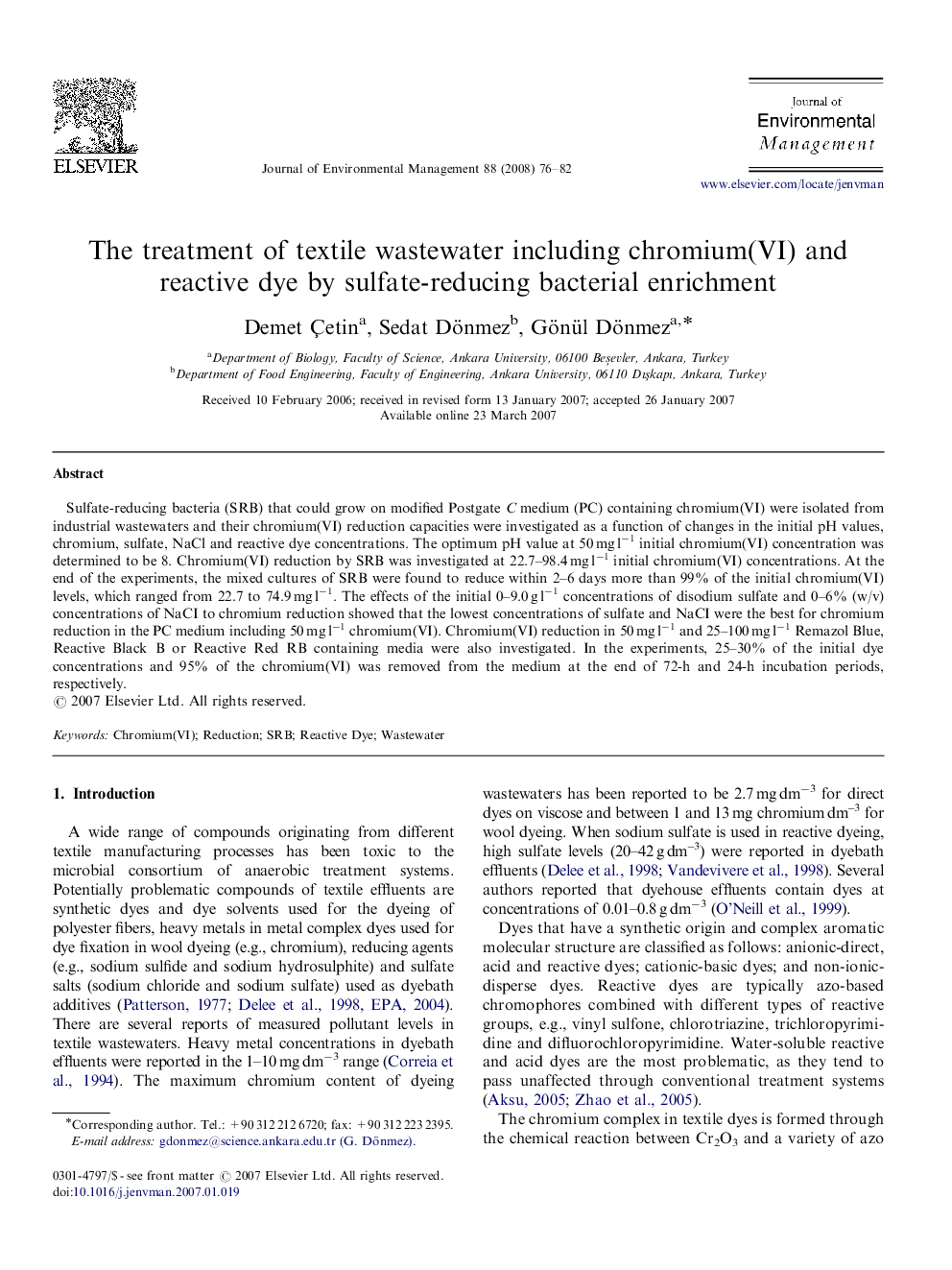| Article ID | Journal | Published Year | Pages | File Type |
|---|---|---|---|---|
| 1058557 | Journal of Environmental Management | 2008 | 7 Pages |
Sulfate-reducing bacteria (SRB) that could grow on modified Postgate C medium (PC) containing chromium(VI) were isolated from industrial wastewaters and their chromium(VI) reduction capacities were investigated as a function of changes in the initial pH values, chromium, sulfate, NaCl and reactive dye concentrations. The optimum pH value at 50 mg l−1 initial chromium(VI) concentration was determined to be 8. Chromium(VI) reduction by SRB was investigated at 22.7–98.4 mg l−1 initial chromium(VI) concentrations. At the end of the experiments, the mixed cultures of SRB were found to reduce within 2–6 days more than 99% of the initial chromium(VI) levels, which ranged from 22.7 to 74.9 mg l−1. The effects of the initial 0–9.0 g l−1 concentrations of disodium sulfate and 0–6% (w/v) concentrations of NaCI to chromium reduction showed that the lowest concentrations of sulfate and NaCI were the best for chromium reduction in the PC medium including 50 mg l−1 chromium(VI). Chromium(VI) reduction in 50 mg l−1 and 25–100 mg l−1 Remazol Blue, Reactive Black B or Reactive Red RB containing media were also investigated. In the experiments, 25–30% of the initial dye concentrations and 95% of the chromium(VI) was removed from the medium at the end of 72-h and 24-h incubation periods, respectively.
